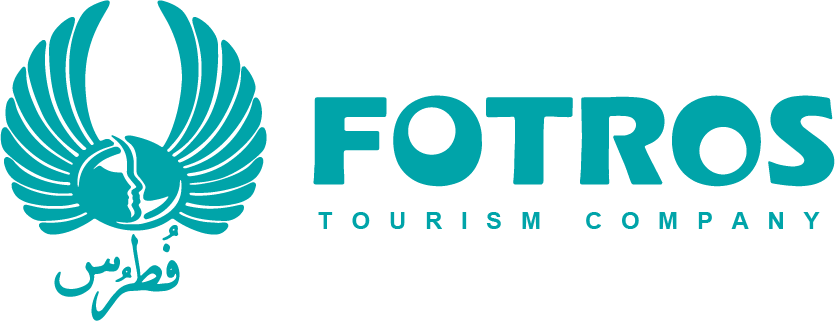
Cosmetic Surgeries
Otoplasty


Otoplasty is a surgical procedure performed to reshape the outer ear, often to correct cosmetic concerns or deformities. It is commonly done to address prominent or protruding ears, a condition sometimes referred to as "bat ears." Otoplasty is not typically performed for medical reasons, but rather for aesthetic purposes.
During the procedure, the surgeon will make an incision behind the ear to access the cartilage. They will then reshape the cartilage as needed and may remove excess tissue if necessary. The goal is to create a more natural and balanced appearance of the ears, bringing them closer to the head and reducing their prominence.
Otoplasty is often performed on children and adults who are self-conscious about the appearance of their ears. It is considered a safe and effective procedure with a relatively short recovery time, but like any surgery, it carries some risks and should be done by a qualified and experienced surgeon. The specific techniques used in otoplasty may vary depending on the individual's needs and the surgeon's approach.
Otoplasty, also known as ear surgery or ear pinning, is a cosmetic surgical procedure designed to correct the size, shape, or position of the ears. It is typically suitable for individuals who are unhappy with the appearance of their ears and seek to improve their self-esteem and overall appearance.




Otoplasty can address various concerns, including:
Prominent ears: Otoplasty can correct ears that stick out more than desired.
Asymmetrical ears: The procedure can be used to make the ears more symmetrical if one ear is significantly different from the other.
Large or elongated ears: If someone is bothered by the size or shape of their ears, otoplasty can help reshape them.
Congenital deformities: Otoplasty can also be used to address congenital ear deformities, such as lop ear, shell ear, or cupped ear.
It's important to note that otoplasty is generally performed on children and adults. In children, the procedure is typically recommended after the ears have reached their full growth, which is usually around the age of 5 or 6. Otoplasty can help prevent potential teasing and bullying that may result from prominent or misshapen ears during a child's formative years.
Before undergoing otoplasty, it's crucial to have a consultation with a board-certified plastic surgeon or a facial plastic surgeon. They can assess your specific concerns, discuss the potential risks and benefits, and determine whether you are a suitable candidate for the procedure. The decision to have otoplasty should be made after careful consideration and with realistic expectations about the results.
general care after otoplasty:
Follow Your Surgeon's Instructions: The most important step is to follow your surgeon's post-operative instructions diligently. They will provide you with specific guidance based on your individual case.
Dressing and Bandages: Your surgeon may place a dressing or bandages around your ears after the surgery. These are typically removed a few days after the procedure. Ensure that they remain clean and dry, and do not attempt to remove them yourself.
Pain Management: You may experience some discomfort and pain after the procedure. Your surgeon will prescribe pain medication or recommend over-the-counter pain relievers. Follow their recommendations for pain management.
Head Elevation: Keeping your head elevated, especially during sleep, can help reduce swelling. Use extra pillows to keep your head elevated at a 45-degree angle.
Swelling and Bruising: Swelling and bruising are common after otoplasty. Applying cold compresses to the surgical area in the first 48 hours can help reduce swelling. Your surgeon may also recommend arnica or other medications to minimize bruising.




Keep the Area Clean: Gently clean around the ears as instructed by your surgeon. Avoid getting the incision sites wet until you are advised to do so.
Avoid Strenuous Activity: You should avoid strenuous physical activity and heavy lifting for at least a few weeks to prevent any strain on the surgical area.
Protect Your Ears: After the bandages are removed, protect your ears from trauma and injury. You may need to wear a protective headband or other devices to shield the ears while sleeping, especially during the initial healing phase.
Avoid Sun Exposure: Exposure to the sun can increase swelling and scarring. Wear a wide-brimmed hat or use sunscreen to protect your ears from the sun.
Follow-up Appointments: Attend all scheduled follow-up appointments with your surgeon. They will monitor your progress and make any necessary adjustments.
Diet and Nutrition: Eating a healthy, well-balanced diet can aid in the healing process. Nutrients like vitamin C, zinc, and protein are important for tissue repair.
It's crucial to have open communication with your surgeon throughout the recovery process. If you notice any signs of infection, excessive bleeding, or other concerning issues, contact your surgeon immediately. Everyone's healing process is unique, so the above guidelines can serve as general advice, but always defer to your surgeon's specific recommendations for the best care after otoplasty.
Otoplasty Techniques:
Surgical and Nonsurgical Approaches
- Classical Surgical Method:
This approach involves making an incision in the pinna to access the ear cartilage. The cartilage is then either removed or bent to achieve a new shape and size based on the patient's preferences. Excess skin is removed, and the wound is sutured and covered with a bandage. One notable feature of this method is the ease of accessing the back of the ear, resulting in barely visible scars post-surgery. - Nonsurgical Otoplasty Method for Babies:
For infants under 6 months old, whose cartilage is delicate, a nonsurgical technique is preferred to correct ear cartilage while it is still pliable. This involves having the baby wear an ear mask to guide and control the growth of the ear cartilage.


- Earfold Method: In this technique, an implant made from nitinol is utilized to pin the ear cartilage. The procedure involves a small incision (approximately 5mm) in the skin. Before the operation, the individual can preview the results using a device called a pre-fold device. The outcomes are rapid, and permanent, and the costs are lower compared to the traditional method, with barely noticeable scars. A small ear bandage is typically required for this method.


Otoplasty Surgery Step-by-Step
- Anesthesia Administration:The surgery is conducted under either general or regional anesthesia, depending on the patient's condition and the physician's recommendation.
- Surgical Incisions: The surgeon employs specific techniques to fold the pinna and reduce the size of the ear cartilage. Typically, incisions are made in the back of the ear. However, in certain cases, incisions may be required in the front of the ear. In such instances, the surgeon aims to conceal the scar within the natural folds of the ear.
- Suturing the Incisions: The surgeon carefully sutures the incisions to achieve the desired new shape for the ear.
Otoplasty Cost in Iran
As otoplasty is considered a cosmetic procedure, it is generally not covered by insurance, making cost a significant consideration when deciding where to undergo the surgery.
The average cost of otoplasty surgery is approximately $4,000 in the USA and around $5,000 in the UK. In Iran ranges from $1,500 and $2,000. By choosing otoplasty in Iran, you can benefit from a lower cost without compromising on the expertise of highly qualified surgeons.




Our services include:
![]() our online services include: quotes and consultation
our online services include: quotes and consultation
![]() Planning the highest word-level medical trips and quality hospitals and medical centers according to the patient's request and budget.
Planning the highest word-level medical trips and quality hospitals and medical centers according to the patient's request and budget.
![]() Appointing treatments by the most skilled and experienced doctors.
Appointing treatments by the most skilled and experienced doctors.
![]() Airport pick-up/drop off, check-ups, accompanying translator, book hotel (for patients and their families)
Airport pick-up/drop off, check-ups, accompanying translator, book hotel (for patients and their families)
![]() Pre-hospitalization / post-hospitalization care services
Pre-hospitalization / post-hospitalization care services
All-Inclusive Medical Travel Packages
based on your budget, our team will assist you in choosing the best hotels, doctors, and medical centers. Our packages include:
 Airport Pickup Services
Airport Pickup Services Airport Dropoff services
Airport Dropoff services Hotel
Hotel Ticket
Ticket visa
visa translator
translator Transfer
Transfer SIM Card
SIM Card Sightseeing
Sightseeing


 why Iran
why Iran
Patients may choose to have abdominoplasty (commonly known as a tummy tuck) in Iran for a variety of reasons
Cost, Quality of Care, Privacy and Discretion, Combined Tourism, no Waiting Times
![]()
Fotros is an Iranian health tourism company with a professional team consisting of a support team and word-level doctors in medical and cosmetic surgeries like Neurosurgery, Rhinoplasty, Breast cosmetic surgeries, Liposuction, tummy tuck, etc.












 why Iran
why Iran